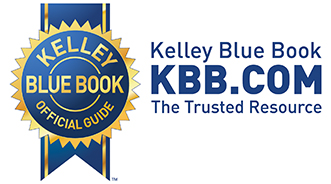KBB: New & Used Prices Decline Despite High Fuel Rates

Consumers might take advantage of falling rates and get themselves into a new ride, as prices for both new and used units are sliding, according to Kelley Blue Book.
And going against the normal trend, even as fuel prices spike, hitting above $4 per gallon in many parts of the country, the prices of used gas sippers are not seeing any gains. And even though used prices are sliding after setting record highs earlier this year, new and pre-owned rates still sit dangerously close, according to KBB’s Blue Book Market Report for this month.
Commenting on price trends in light of the recent rise in gas rates, officials noted, “Even as fuel prices approached record highs this year, values of fuel-efficient vehicles have continued to lead market declines during the past several months, while values of trucks and SUVs have remained steady, even outperforming the overall market average.
“As fuel prices spike, Kelley Blue Book typically sees values of fuel-sipping subcompact, compact and hybrid cars increase, while values of fuel-thirsty trucks and SUVs drop. This was the case in 2008, 2011, and to a lesser extent, April of this year when fuel prices peaked at $3.92 per gallon,” they continued, noting the current price environment is bucking past years' trends.
In fact, KBB reported that in 2008, analysts saw “wild swings” in compact car values of nearly 30 percent. KBB went on to note that per the current price environment, the “market has nearly disregarded the fact that 2012 will likely end with the highest average annual fuel prices on record.”
Highlighting the numbers in more detail, in the last four weeks alone, compact car prices declined more than 5 percent, with subcompact and hybrid cars declining nearly 3 percent, the company noted.
On the other hand, “this is in stark contrast to the 0.5 percent increase for full-size SUVs and the less than 1 percent decline of full- and midsize pickup trucks,” officials continued.
But KBB believes the market could still react to high gas prices if fuel rates rise much further, but it’s not counting on it.
“With a typical one- to two-month lag before rising fuel prices impact values, Kelley Blue Book believes the market could still react by the end of the month, but it is unlikely. At the moment, fuel prices have stabilized and may come back down now that Hurricane Isaac has passed and Gulf oil production is expected to resume,” officials explained.
But why isn’t the market reacting as it has before during a gas-price spike?
“Now that most consumers have had ample opportunity to switch their household vehicles to better suit their personal threshold for fuel price pains, values will continue to better withstand volatility in gas prices. As it stands today, Kelley Blue Book believes that values of fuel-sippers will continue to depreciate moderately through the rest of the year, while values of trucks and SUVs should remain relatively flat,” KBB explained.
New & Used Prices Come Dangerously Close
And as new- and used-vehicle prices continue to fall, and the average age of vehicles on the road sits at 11 years, many consumers are looking for a replacement vehicle.
And as consumers decide whether to buy a pre-owned or new car, KBB officials noted shoppers may be turning towards new as buying late-model used units is becoming less of a cash saver. In fact, on average, Kelley Blue Book determined that a consumer only saves a little more than $75 per month by opting for a 1-year-old used vehicle rather than buying a new car.
“Shoppers would need a 5-year-old vehicle to obtain a more substantial savings of $200 per month,” officials added.
And the price-point difference becomes even less if consumers are in looking for a compact car in the secondary market. On average, KBB found that consumers only save $50 per month by opting for a used compact rather than new. Moreover, savings “shrink” to $40 per month for a used subcompact.
“Since used vehicles only offer modest savings, many consumers are opting to purchase new vehicles. In fact, a recent survey conducted by Kelley Blue Book Market Intelligence found that 53 percent of all in-market consumers indicated that high used-car values have influenced their decision to consider a new car,” officials concluded.
Both New and Used Prices Fall
But even though used prices remain close to new rates, both new and pre-owned price tags are falling.
KBB asserts that consumers are currently paying a little more than $450 less for new vehicles than they were last year, and used vehicles are selling for nearly $1,000 less.
KBB attributes much of this price slide to fading inventory shortages.
“Used inventory at auction remains somewhat depressed, but dealers have been less reliant on vehicles purchased at auction due to higher trade-in volume. New-vehicle inventory also remains in a good spot as manufacturers have done a tremendous job of matching production to satisfy demand,” officials explained.
“With both new- and used-vehicle inventory concerns fading fast, consumers have benefitted from moderate price declines as dealers price to compete,” they added.
Highlighting the numbers, KBB noted that in the last month alone, used-vehicle values declined by 1.5 percent, while new cars tumbled a modest 0.5 percent.
“Kelley Blue Book expects declines to continue through year-end, so consumers can either take advantage of a great deal today, or wait until December to find the best deals of the year. Those who wait will face a more limited selection relative to today’s availability. Shoppers with a specific model in mind may want to jump on a good opportunity if it presents itself,” officials concluded.

 View The Latest Edition
View The Latest Edition

